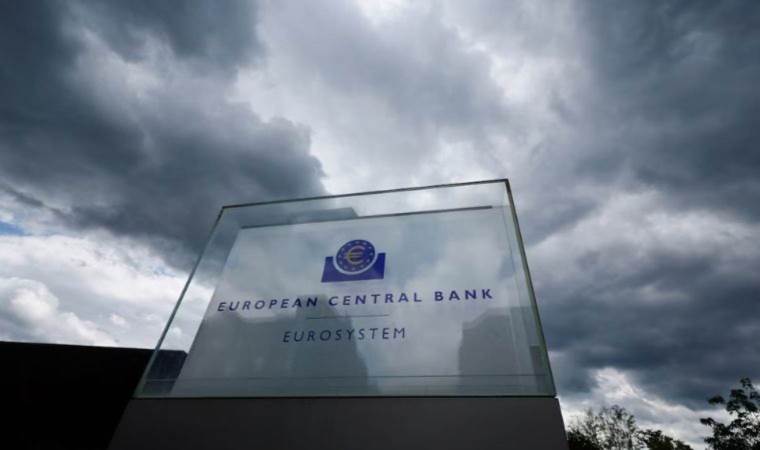CBRT Deputy Governor: No Interest rate cuts until inflation improves
Vice President of the Central Bank of the Republic of Turkey (TCMB), Cevdet Akçay, stated that interest rate cuts are not currently on the agenda. He emphasized, "A tight monetary policy stance will be maintained until permanent improvements are achieved in the main trend of monthly inflation, inflation expectations, and domestic demand balance."

Cevdet Akçay spoke to Reuters, and here are the highlights of his statements:
On Inflation and Economic Policies:
"Despite the slowdown in domestic demand and the real appreciation of the exchange rate contributing to the disinflation process, we clearly see that inflation expectations are still not anchored. Expectations are formed with a pessimistic tendency and are more sensitive to inflation realizations compared to previous periods.
We closely monitor the inflation expectations of market participants, firms, and households. Unfortunately, only the expectations of market participants have started to converge with our year-end forecast.
'TENDENCY TO REMAIN PESSIMISTIC'
Households are relatively less sensitive to the Central Bank's forward policy guidance and tend to remain pessimistic until they see a significant downward trend in headline inflation.
Market participants, on the other hand, are more inclined to revise their expectations in light of new information.
Due to their role as price setters, the convergence of firms' inflation expectations with the Central Bank's forecast range has a significant impact on the extent of the economic slowdown needed to reduce inflation.
The more firms use the Central Bank's forecasts as a reference in their pricing and budgeting processes, the lower the cost of achieving our inflation targets on production and employment.
'WE EXPECT A 1.5-POINT CONTRIBUTION TO INFLATION'
The less sensitive and responsive expectations are to our tight stance, the higher the cost of the disinflation policy on production and employment.
In June, the main trend of monthly inflation fell to approximately 2%. However, we estimate that adjustments in taxes and administered prices will add 1.5 points to monthly inflation in July. This increases the likelihood of an outcome higher than the inflation expected by market participants in July.
The volatility in monthly inflation requires additional effort to measure and understand the fundamental dynamics of inflation. In the coming period, we may see surprises in both directions in monthly inflation, but as long as it does not cause a change in the main trend, it does not require an immediate reaction. Therefore, it is important to maintain a tight monetary policy stance with patience and determination.
STATEMENT ON INTEREST RATE CUTS
Although an interest rate cut cycle is not currently being considered, when cuts do begin, the process will be managed with clear signals that the tight stance in monetary policy will be maintained.
A tight monetary policy stance will be sustained until permanent improvements are observed in the main trend of monthly inflation, inflation expectations, and the balancing of domestic demand. The precondition for considering a loosening cycle in monetary policy is a significant and permanent decline in the main trend of monthly inflation.
Central banks are naturally inclined to err on the side of caution, preferring to be prudent in the face of different risks. This caution could relate to the risk of inflation reigniting due to an early rate cut or the risk of a hard landing due to an excessively prolonged tightening period.
Given the current conditions in Turkey, the higher risk is associated with the first scenario, hence an interest rate cut is not on our agenda at the moment. Until a permanent decline is observed in the main trend of monthly inflation, and other indicators we closely monitor accompany this trend, interest rate cuts will not be considered.
ON LIQUIDITY AND RESERVES
The improvement in our reserves and the increasing demand for TL deposits boost our confidence in accelerating the exit from exchange rate-protected deposits. Our reserve accumulation process does not proceed in a straight line in an environment where foreign inflows are strong and volatile.
'DIVERSIFYING STERILIZATION TOOLS'
Liquidity conditions can shift to surplus or deficit due to daily variations in portfolio preferences of domestic and foreign investors. We do not operate a corridor policy where the Central Bank is on high alert daily. We closely monitor liquidity conditions with a forward-looking perspective.
We have enhanced the functionality of the transmission mechanism by ending swaps conducted with banks. Credit growth constraints serve as a safeguard against excessive credit growth while we anchor inflation expectations with a tight monetary stance.
We are taking dynamic steps, including diversifying sterilization tools. It is important to reiterate that our primary policy tool is the policy rate. Macroprudential measures, complementary in nature, have the advantage of achieving immediate effects. Banking system regulations, which had substituted for monetary policy, have been reduced and simplified."
Most Read News
-
 Sanctioned tankers leave Venezuela as US tightens oil bl
Sanctioned tankers leave Venezuela as US tightens oil bl
-
 Spain says Venezuela’s natural resources belong to its p
Spain says Venezuela’s natural resources belong to its p
-
 US officials say raid to capture Venezuela’s Maduro left
US officials say raid to capture Venezuela’s Maduro left
-
 Venezuela opposition leader Machado pushes leadership cl
Venezuela opposition leader Machado pushes leadership cl
-
 Israel issues tender to build over 3,400 settler homes i
Israel issues tender to build over 3,400 settler homes i
-
 NATO chief welcomes progress on securing 'end to Ukraine
NATO chief welcomes progress on securing 'end to Ukraine
-
 US demand for exclusive oil partnership with Venezuela a
US demand for exclusive oil partnership with Venezuela a
-
 US forces attempt to board Russian-flagged oil tanker in
US forces attempt to board Russian-flagged oil tanker in











